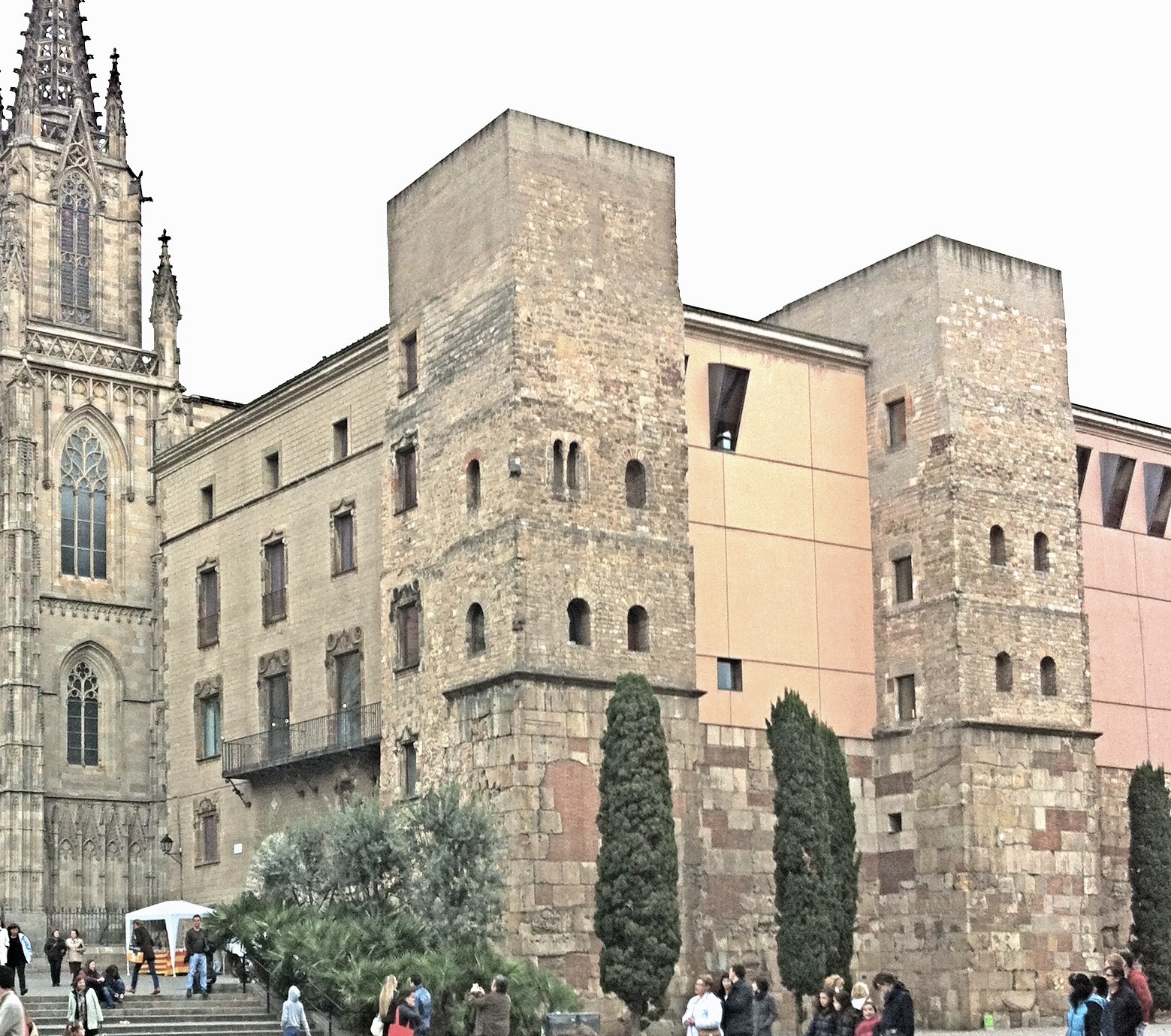Since its Roman foundation in the 1st century BC, Barcelona always had walls to protect the city. However, the initial walls were not very impressive. Barcelona was founded in the time of the Roman Pax, established by Emperor Octavius Augustus, so it wasn’t required such a big defensive wall.
This wall, therefore, protected the surface of the ancient Roman city, about 13 hectares. It was about 9 meters high and 2 to 3.5 meters wide. It was built using the technique of the opus quadratum, ashlars and adobe, and it only had defense towers at the four gates that were at the ends of the two main streets, the Cardus and the Decumanus.
When things get complicated
But during the s. III AD, the invasions of the barbarian peoples became more and more present throughout the Empire and also reached Hispania.
After the Frankish attack of the city in 270 AD, it was decided to build a much stronger wall.
The new wall was 12 meters high and 6 meters wide. To do this, a new wall was built using a more advanced technique, Opus Caementicium. This wall was done aroound the ancient wall by the outside. The interior space between the two was filled with rubble of all kinds. They had to make it fast and using anything, that’s why it was found stones with inscriptions, statues, capitals, parts of columns, etc. have been found.
But what made these walls so important were the 76 defense towers about 18 meters high, which were built along the perimeter. They were very close to each other to prevent that catapults destroy the wall sheets.
All this walled enclosure could be accessed only through the 4 gates corresponding to the ends of the main streets. The ones located at the ends of the Decumanus, the Decuman doors, were three-fold. That means they had 3 holes, 3 accesses. The two sides were for pedestrians, and the middle were for cars and horses. They were wooden doors but were covered with bronze to prevent they got burned when attacked.
Barcino’s strength at that time was key to its further growth. When the barbarians began to sack the Peninsula, the people in the countryside were helpless. That is why they began an exodus to the city of Barcelona, attracted by the protection afforded by the impressive walls. Thus, during the fall of the Roman Empire, the population of Barcelona increased significantly.
A good investment
And these walls are probably the reason why, centuries later, Charlemagne gave Barcelona a predominance over other cities in Catalonia.
Built in the third century, they were impregnable for many centuries. In fact, Barcelona was not occupied by force either in 720, when it capitulated in front of the Muslims, nor in 801 before the conquest of the Franks. Actually, it is considered that the only time the Roman wall could not withstand an attack was during the Almazzur raid in 985. And recent studies have put occupation in between considering that maybe the doors of the city were opened from the inside.
However, the Almansur attack was significant enough to decide reinforcing this first wall. Using the Roman defense towers, a castle was built in everyone of the city entrances.
The most important was the Main Portal, on the northeast door, which would eventually become the Old Castle, which is where the viscount of Barcelona settled.
You can follow the layout of the Roman walls on our walks through the historic center of Barcelona. Whether touring the Gothic Quarter or on our visit to the Roman Barcino, you can see how it has been integrated into the daily life of the city.

